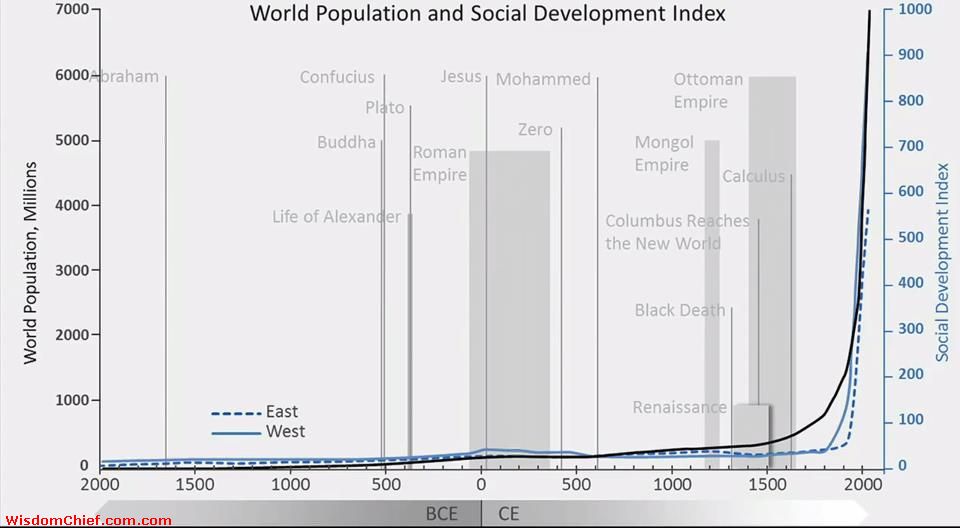The Second Machine Age
What have been the most important developments in human history?

For many thousands of years, humanity was a very gradual upward trajectory.
Progress was achingly slow, almost invisible. Animals and farms, wars and empires, philosophies and religions all failed to exert much influence.
But just over two hundred years ago, something sudden and profound arrived and bent the curve of human history — of population and social development — almost ninety degrees.
Which developments bent the curve of human history?
Guess an answer.
What's happening right now?
Over the past few years, computers, software, and communications networks started surprising us.
They started diagnosing diseases, listening and speaking to us, writing high-quality prose, while robots started scurrying around warehouses driving cars with minimal or no guidance.
Self Driving Cars and Trucks
Robots
Speech Recognition and Natural Language Processing
Humans and Machines
Autonomous mobility and fine motor control,
language and complex communication,
pattern matching and unstructured problem solving
are considered uniquely human abilities.
Computer based devices are getting better in:
interacting with physical world,
fine and gross motor control,
vision and other senses;
language,
voice recognition,
natural language processing,
creating narratives;
problem solving,
answering unstructured questions,
rule based analysis,
pattern recognition and classification.
Computers and other digital advances are doing for mental power — the ability to use our brains to understand and shape our environments — what the steam engine and its descendants did for muscle power.
They’re allowing us to blow past previous limitations and taking us into new territory. How exactly this transition will play out remains unknown, but whether or not the new machine age bends the curve as dramatically as Watt’s steam engine, it is a very big deal indeed.
The Steam Engine
The James Watt's steam engine started the Industrial Revolution. More than anything else, it allowed us to overcome the limitations of muscle power, human and animal, and generate massive amounts of useful energy at will. This led to factories and mass production, to railways and mass transportation. It led, in other words, to modern life.
This page is based on “The Second Machine Age: Work, Progress, and Prosperity in a Time of Brilliant Technologies” by Erik Brynjolfsson and Andrew McAfee